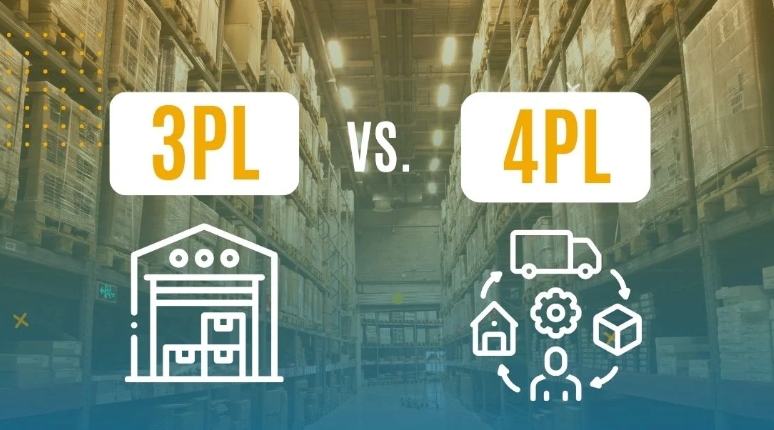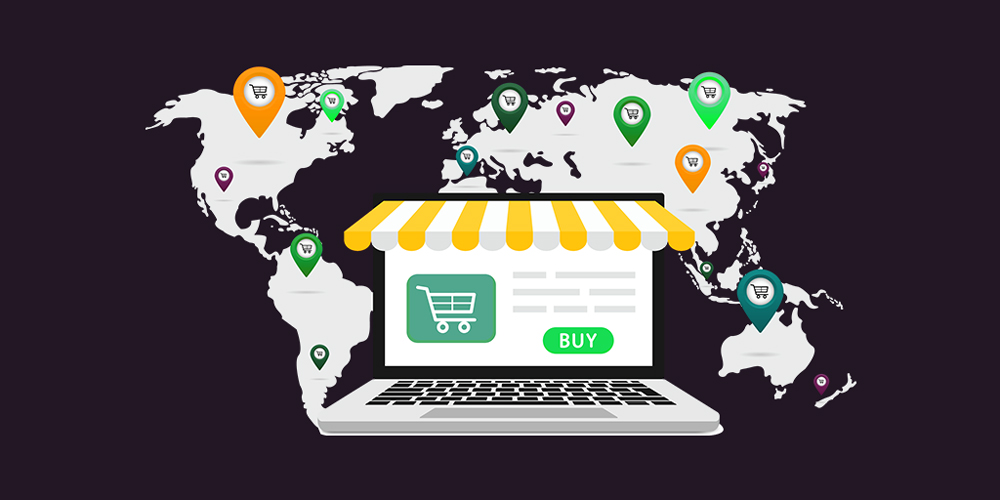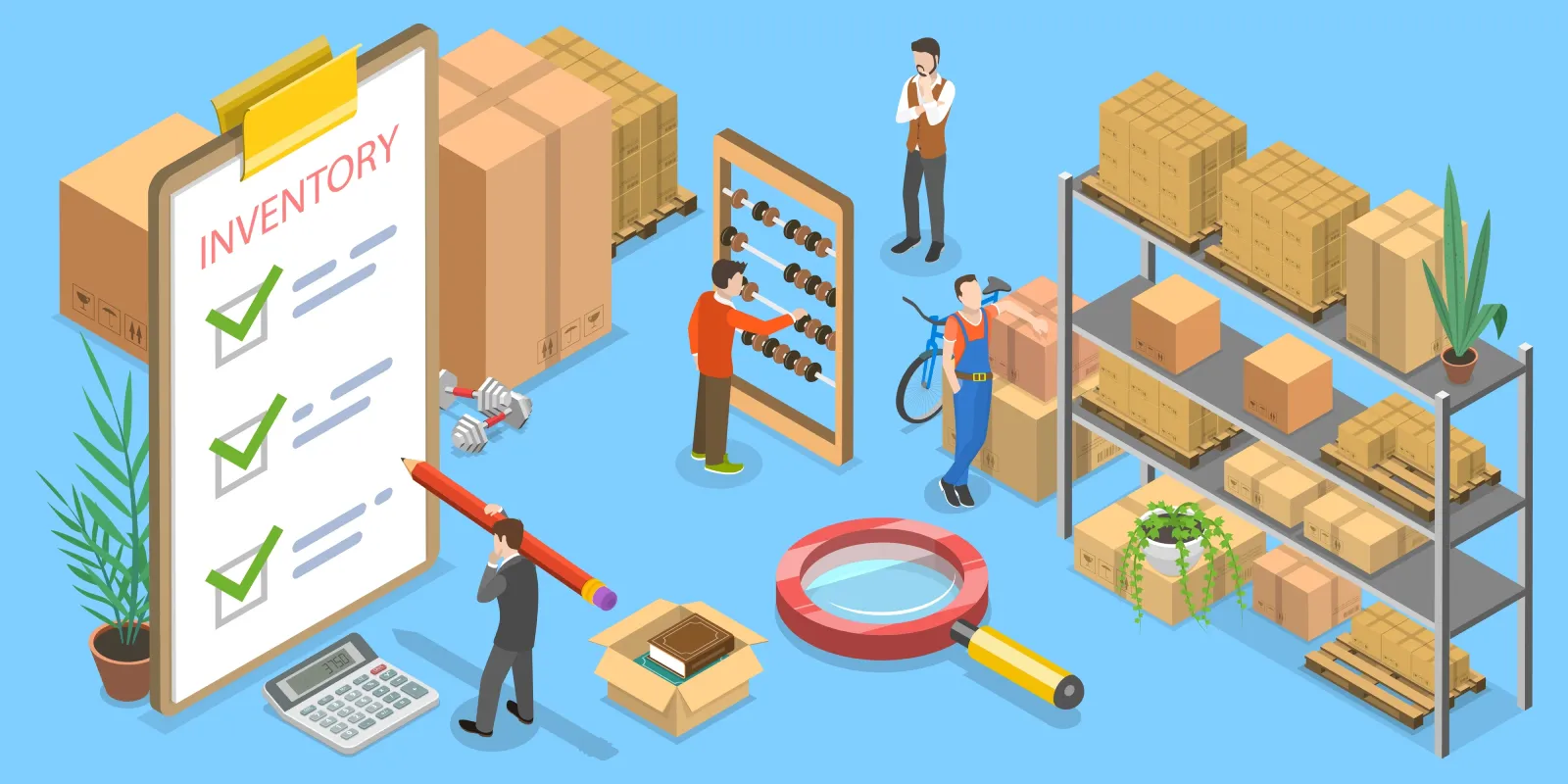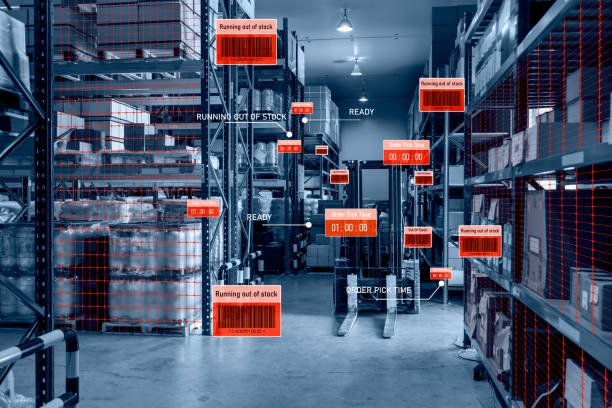4PL vs. 3PL : Principales différences et comment choisir le bon partenaire
Les marques de vente directe et les entreprises de commerce électronique en pleine croissance sont toujours à la recherche de moyens plus intelligents pour gérer les chaînes d'approvisionnement. Nombre d'entre elles estiment que Logistique 4PL offre un niveau de stratégie et de contrôle supérieur à celui des fournisseurs traditionnels. Pour comprendre pourquoi, il est utile de comparer la logistique de quatrième partie (4PL) à la logistique de troisième partie (3PL) et d'apprendre à choisir le bon partenaire. Des services tels que Colis postal montrent comment ces modèles peuvent fonctionner ensemble pour accroître l'efficacité et améliorer la satisfaction des clients.
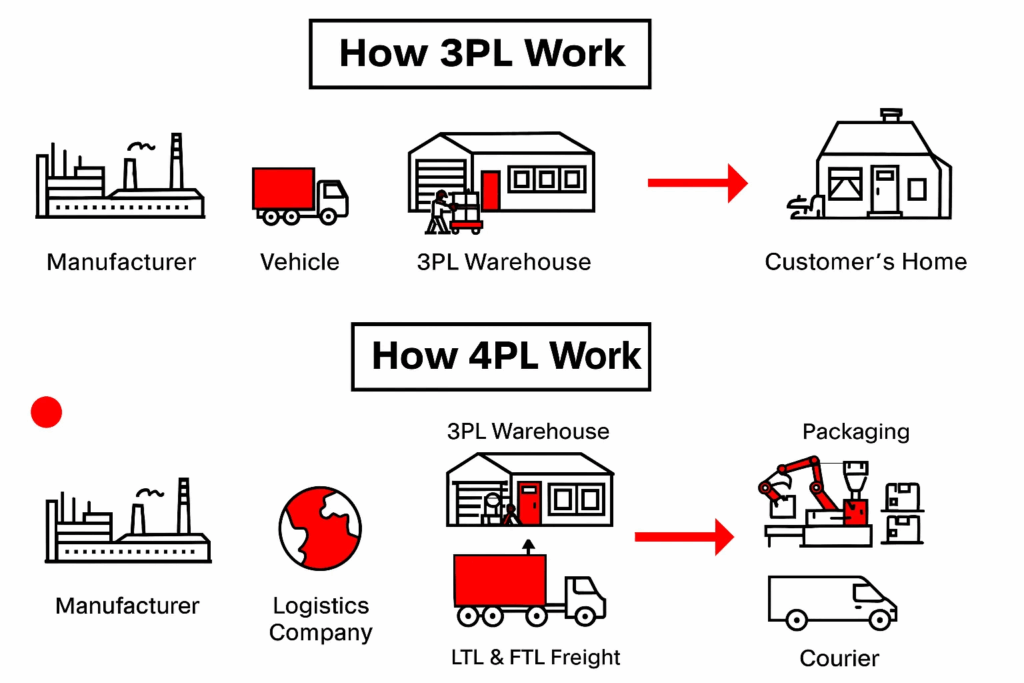
Comprendre les bases
Qu'est-ce que 3PL ?
Un prestataire logistique tiers gère les tâches courantes telles que l'entreposage, le transport et l'exécution des commandes. Les prestataires de services logistiques sont parfaits pour les marques qui ont besoin d'externaliser les opérations quotidiennes sans avoir à constituer leur propre équipe logistique. Ces prestataires se concentrent sur l'exécution et aident les entreprises à expédier leurs produits rapidement et de manière fiable.
Qu'est-ce que le 4PL ?
A logistique de la quatrième partie prend le contrôle de l'ensemble de la chaîne d'approvisionnement. Au lieu de se contenter de stocker et d'expédier les marchandises, un 4PL coordonne tous les fournisseurs, les transporteurs et même plusieurs 3PL. Cela signifie qu'un seul point de contact gère la planification, la technologie et le suivi des performances. Il agit comme un véritable intégrateur de la chaîne d'approvisionnement et veille à ce que tous les maillons fonctionnent sans heurts.
L'importance de la distinction
Connaître la différence permet aux entreprises de faire correspondre leurs besoins logistiques au service adéquat. Alors que les 3PL se concentrent sur les opérations quotidiennes, les 4PL Logistics élaborent des stratégies qui favorisent la croissance à long terme. Les marques peuvent éviter des erreurs coûteuses en choisissant le bon niveau de soutien dès le départ.
Comparaison entre les services logistiques 4PL et 3PL
Étendue des services
- 3PL: Il s'occupe de l'entreposage, de la préparation des commandes, de l'emballage et de l'expédition.
- 4PL: Supervise tous les maillons de la chaîne d'approvisionnement, de la gestion des fournisseurs à la gestion des stocks. livraison du dernier kilomètre.
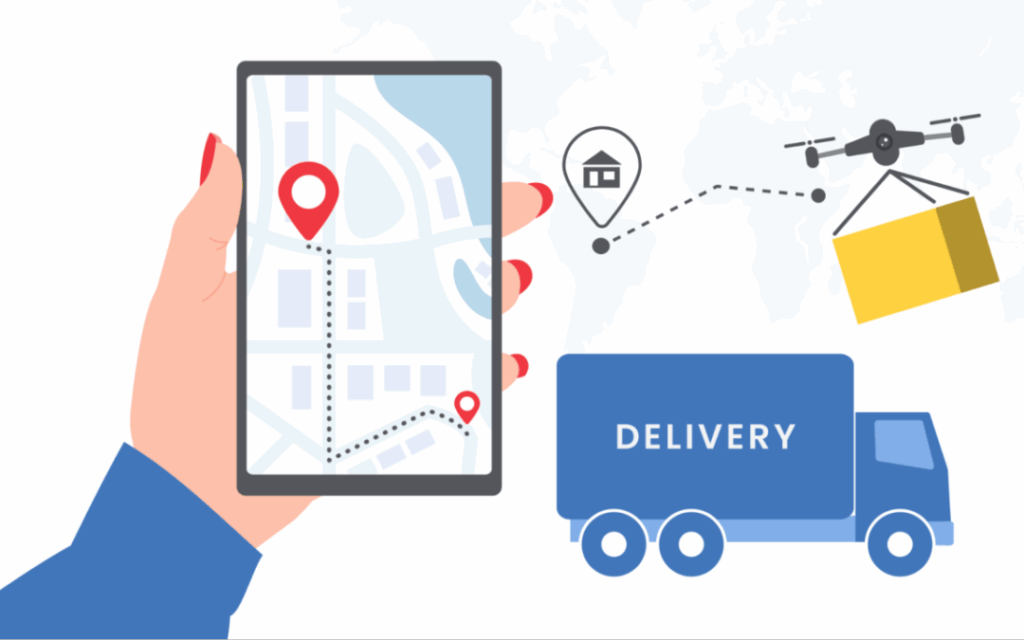
Niveau de contrôle
- Les prestataires 3PL exécutent les tâches qui leur sont confiées.
- Les 4PL agissent comme des gestionnaires stratégiques qui prennent des décisions pour optimiser les coûts, la rapidité et la qualité du service.
Cette différence permet aux marques de s'assurer que leur logistique s'adaptera à l'évolution de la demande du marché.
Technologie et données
- Les 3PL utilisent souvent des outils de suivi de base.
- Les partenaires logistiques 4PL investissent dans des plates-formes avancées pour visibilité en temps réel, Les services d'information, d'analyse et de prévision sont également très importants.
Des outils de données solides permettent aux marques de prévoir la demande et de planifier les stocks sans se perdre en conjectures.
Coût et investissement
- Les services 3PL nécessitent généralement un coût initial moins élevé.
- Les solutions 4PL peuvent impliquer des frais plus élevés mais permettent de réaliser des économies au fil du temps grâce à une meilleure optimisation.
Les avantages financiers à long terme l'emportent souvent sur les frais d'installation initiaux.
Pourquoi les marques DTC choisissent-elles la logistique 4PL ?
Gestion centralisée de la chaîne d'approvisionnement
Avec un partenaire unique gérant toutes les opérations, les marques peuvent se concentrer sur les produits et le marketing, tandis que les 4PL assurent le bon fonctionnement de la logistique. Cette centralisation simplifie également la communication et réduit les erreurs entre les différents prestataires de services.

Livraison plus rapide et précision accrue
4PL coordonner plusieurs entrepôts et transporteurs pour réduire les délais de livraison et les erreurs. Ce niveau de contrôle renforce la confiance et incite à renouveler les achats. Les acheteurs remarquent que les commandes arrivent à temps et en parfait état.
Une meilleure expérience client
Les acheteurs veulent une expédition rapide et des mises à jour claires. Un 4PL contrôle chaque étape, de la commande à la livraison, et assure un suivi en temps réel. Les clients obtiennent des informations fiables et une résolution rapide des problèmes, ce qui renforce la fidélité à la marque et encourage les clients à revenir.
L'évolutivité au service de la croissance
Lorsque les entreprises se développent dans de nouvelles régions, la logistique 4PL peut étendre ses opérations sans investissements majeurs en termes d'installations ou de personnel. Colis postal montre comment un réseau mondial peut faire face à des pics soudains de la demande tout en maintenant des normes de service élevées. Cette flexibilité est cruciale pour les marques en cas de ventes saisonnières ou de croissance rapide.
Quand un 3PL peut suffire
Toutes les marques n'ont pas besoin de la service complet d'un 4PL. Les petites entreprises ou celles dont la logistique est simple peuvent trouver dans un 3PL le bon équilibre entre coût et soutien. Une société 3PL est idéale dans les cas suivants
- Les volumes de commandes sont réguliers et prévisibles.
- Les tâches logistiques se limitent à l'entreposage et à l'expédition de base.
- L'entreprise préfère maintenir un certain contrôle interne sur la stratégie.
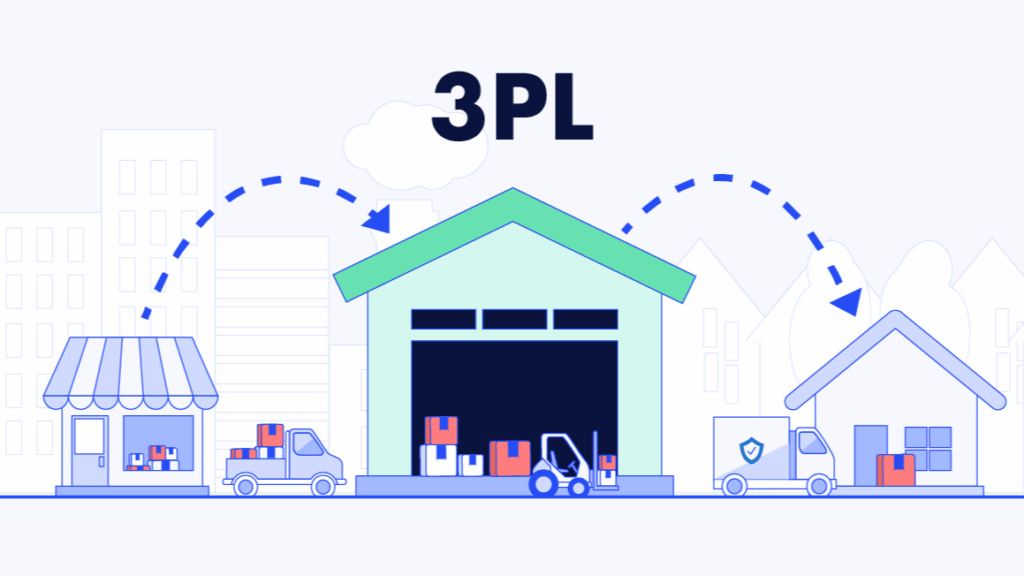
Pour ces marques, travailler avec un 3PL permet de simplifier les opérations tout en améliorant l'efficacité des livraisons.
Facteurs clés pour choisir le bon partenaire
Plate-forme technologique
Rechercher visibilité en temps réel, Une plate-forme solide réduit les erreurs et fournit des informations pour une meilleure planification. Une plateforme solide réduit les erreurs et fournit des informations pour une meilleure planification.
Portée du réseau
Assurez-vous que le fournisseur est en mesure de gérer les marchés nationaux et internationaux au fur et à mesure que votre entreprise se développe. Une large couverture signifie moins de retards et des clients plus satisfaits.
Expérience DTC
Un partenaire familier des opérations de vente directe au consommateur comprend le besoin de rapidité et de clarté de la communication. L'expérience de la logistique DTC permet d'éviter les pièges les plus courants.
Évolutivité
Choisissez un fournisseur capable d'évoluer avec votre marque et de s'adapter aux variations saisonnières de la demande. L'évolutivité permet d'éviter les changements constants de partenaires au fur et à mesure que votre entreprise se développe.
Une communication forte
Des réponses rapides et des mises à jour proactives permettent de prévenir les problèmes et de maintenir des opérations fluides. Une équipe réactive vous informe, vous et vos clients.

Étapes de la prise de décision
- Évaluez vos besoins - Identifier la complexité de votre chaîne d'approvisionnement et les plans de croissance futurs.
- Comparer les offres - Examinez les services, les modèles de tarification et la technologie proposés par chaque fournisseur.
- Demande d'études de cas - Demandez des exemples de marques similaires qu'ils ont soutenues.
- Tester leur technologie - Assurez-vous que la plateforme fournit des informations en temps réel et qu'elle est facile à utiliser.
- Vérifier les références - Discutez avec d'autres clients pour confirmer la fiabilité et la qualité du service.
En suivant ces étapes, vous vous assurez de choisir un partenaire qui répond à vos besoins actuels et qui favorise la réussite à long terme.
Le rôle des colis postaux
Parcelles postalesl illustre la manière dont une société 4PL bien gérée peut transformer la chaîne d'approvisionnement d'une marque. En combinant un suivi avancé, une gestion globale des transporteurs et une planification basée sur les données, il aide les marques de DTC à s'adapter plus rapidement et à offrir une expérience client sans faille. Ce niveau de soutien permet aux entreprises de se concentrer sur le marketing et le développement de produits plutôt que sur la logistique quotidienne.
Conclusion
Le choix entre la logistique 3PL et 4PL dépend de la taille de l'entreprise, de ses objectifs de croissance et de sa complexité. Pour les entreprises qui souhaitent un contrôle stratégique et une visibilité totale, un service de 4PL est souvent la meilleure solution. Pour ceux qui ont des besoins plus simples, un 3PL peut suffire. En comprenant ces différences essentielles et en choisissant soigneusement le bon partenaire, les marques peuvent mettre en place une stratégie logistique plus solide et plus souple qui favorise la réussite à long terme. Cette approche permet non seulement d'économiser du temps et des ressources, mais aussi de renforcer l'expérience du client et de créer un avantage concurrentiel dans le monde en constante évolution du commerce électronique.
Aperçu de l'industrie
nouvelles via la boîte de réception
Nulla turp dis cursus. Integer liberos euismod pretium faucibua

